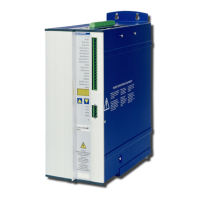1 General
1.1 About this manual ....................................................................... 7
1.2 Target group ........................................................................... 7
1.3 Hints for the online edition (PDF format) ...................................................... 7
1.4 Use as directed ......................................................................... 8
1.5 Symbols ............................................................................... 8
1.6 Abbreviations ........................................................................... 8
1.7 Basic features implemented by CANopen ..................................................... 9
1.8 Transmission rate and procedure............................................................ 9
1.9 Response to BUSOFF communication faults................................................... 9
2 Installation / Setup
2.1 Important notes ........................................................................ 10
2.2 Setting the station address and the transmission rate ........................................... 11
2.3 CANopen interface (X6) .................................................................. 12
2.4 CAN-bus cable......................................................................... 12
2.5 Guide to Setup ......................................................................... 13
2.6 Important configuration parameters for CAN bus operation ....................................... 13
3 CANopen communication profile
3.1 General description of CAN ............................................................... 14
3.2 Construction of the Communication Object Identifier ............................................ 15
3.3 Definition of the used data types ........................................................... 15
3.3.1 Basic data types................................................................... 16
3.3.1.1 Unsigned Integer............................................................... 16
3.3.1.2 Signed Integer................................................................. 16
3.3.2 Mixed data types .................................................................. 16
3.3.3 Extended data types ............................................................... 17
3.3.3.1 Octet String ................................................................... 17
3.3.3.2 Visible String .................................................................. 17
3.4 Communication Objects .................................................................. 17
3.4.1 Network Management Objects (NMT) .................................................. 18
3.4.2 Synchronization Object (SYNC)....................................................... 18
3.4.3 Time-Stamp Object (TIME) .......................................................... 18
3.4.4 Emergency Object (EMCY) .......................................................... 18
3.4.4.1 Application of the Emergency Object ............................................... 19
3.4.4.2 Composition of the Emergency Object .............................................. 19
3.4.5 Service Data Objects (SDO) ......................................................... 20
3.4.5.1 Composition of the Service Data Object ............................................. 20
3.4.5.2 Initiate SDO Download Protocol ................................................... 21
3.4.5.3 Download SDO Segment Protocol ................................................. 21
3.4.5.4 Initiate SDO Upload Protocol ..................................................... 21
3.4.5.5 Upload SDO Segment Protocol.................................................... 21
3.4.5.6 Abort SDO Protocol............................................................. 22
3.4.6 Process Data Object (PDO).......................................................... 22
3.4.6.1 Transmission modes ............................................................ 23
3.4.6.2 Trigger modes ................................................................. 23
3.4.7 Nodeguard ....................................................................... 24
3.4.8 Heartbeat ........................................................................ 25
4 CANopen Drive Profile
4.1 Emergency Messages ................................................................... 26
4.2 General Definitions...................................................................... 27
4.2.1 General Objects ................................................................... 27
4.2.1.1 Object 1000h: Device Type (DS301)................................................ 27
4.2.1.2 Object 1001h: Error register (DS301) ............................................... 27
4.2.1.3 Object 1002h: Manufacturer Status Register (DS301) .................................. 28
4.2.1.4 Object 1003h: Predefined Error Field (DS301) ........................................ 29
4.2.1.5 Object 1005h: COB-ID of the SYNC Message (DS301) ................................. 30
4.2.1.6 Object 1006h: Communication Cycle Period (DS301)................................... 30
4.2.1.7 Object 1008h: Manufacturer Device Name (DS301) .................................... 30
CANopen for S300/S700 3
Kollmorgen 11/2018 Contents
Page

